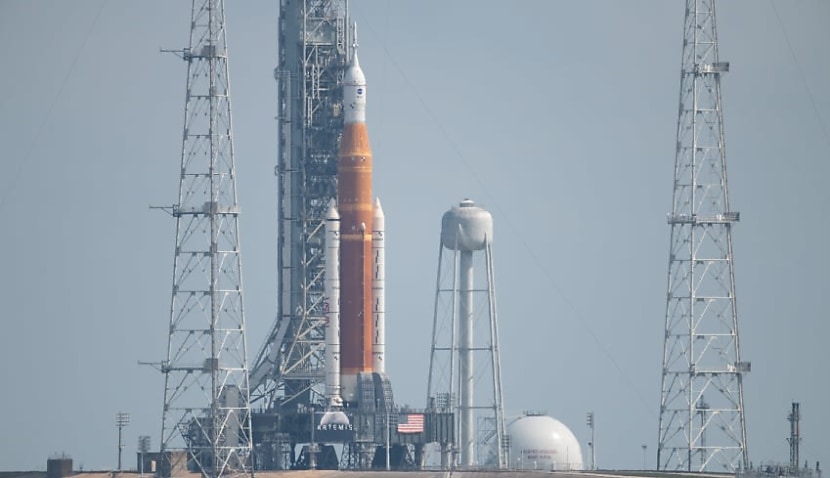
Mike Griffin, who led the organisation from 2005 to 2009, told a key US congressional committee that Artemis II’s mission to fly humans around the moon next year was “very doable”, but taking astronauts to the lunar surface the following year wasn’t.
“I don’t think Artemis 3, the landing mission, is at all realistically scheduled,” he said.
It comes after NASA blamed a number of technical issues for its decision to shift back key Artemis dates by a year.
Artemis II, the crewed moon flyby, shifted from later this year to 2025, while Artemis III, the return to the surface, shifted from September 2025 to September 2026.
On Wednesday, a hearing of the US House science committee’s space subcommittee brought together key figures to debate Artemis’ latest setbacks.
Catherine Koerner, NASA associate administrator for exploration systems development, defended the delay and told witnesses the pushback was to ensure “crew safety”.
“There is margin built into that schedule for us to complete all of that necessary testing,” she insisted.
However, Griffin was not alone in his criticisms at the meeting.
George Scott, acting NASA inspector general, argued the agency would “continue to be challenged on the schedule front” with Artemis III, while William Russell, director of contracting and national security acquisitions, added a 12-month gap between Artemis II and III wasn’t enough.
“One year is not a lot of time to do that learning,” he said.
Earlier this month, NASA revealed problems with the valves in Orion’s life support system were the main reason behind the delays to the Artemis program.
While the component set to be used for the Artemis II blast-off has been tested successfully and installed, another destined for Artemis III failed.
“It became very clear to us that it was unacceptable to accept that hardware, and we need to replace it in order to guarantee the safety of the crew,” said Amit Kshatriya, the deputy associate administrator in charge of the Moon to Mars program.
NASA added it was also troubleshooting a battery issue, challenges with air ventilation onboard the spaceship, and the “unexpected loss of char layer pieces” from Orion’s heat shield during Artemis I.
“Artemis is a long-term exploration campaign to conduct science at the moon with astronauts and prepare for future human missions to Mars,” said Kshatriya.
“That means we must get it right as we develop and fly our foundational systems so that we can safely carry out these missions.”

Adam Thorn
Adam is a journalist who has worked for more than 40 prestigious media brands in the UK and Australia. Since 2005, his varied career has included stints as a reporter, copy editor, feature writer and editor for publications as diverse as Fleet Street newspaper The Sunday Times, fashion bible Jones, media and marketing website Mumbrella as well as lifestyle magazines such as GQ, Woman’s Weekly, Men’s Health and Loaded. He joined Momentum Media in early 2020 and currently writes for Australian Aviation and World of Aviation.
Receive the latest developments and updates on Australia’s space industry direct to your inbox. Subscribe today to Space Connect here.









